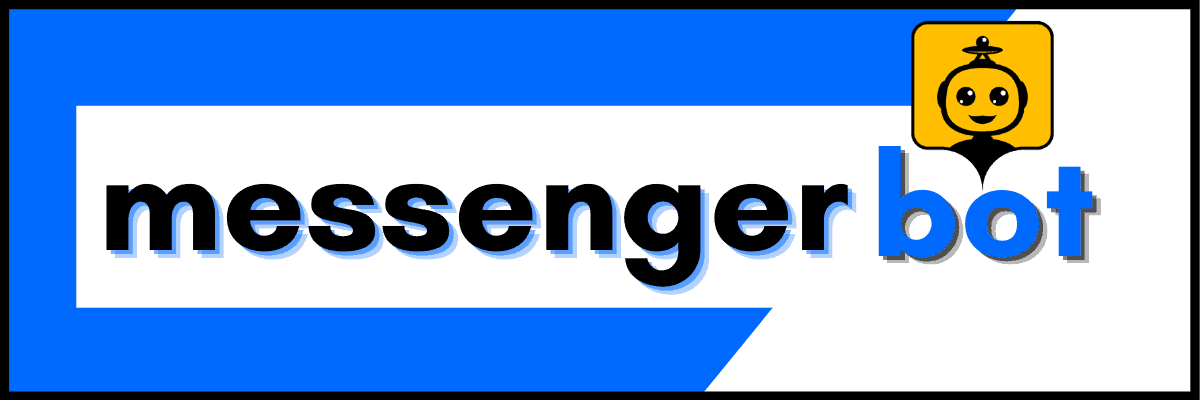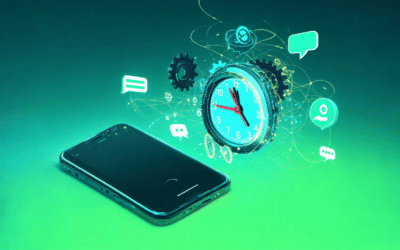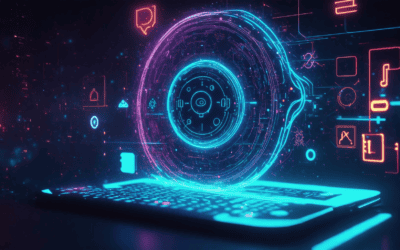In today’s digital landscape, understanding chatbot pricing is essential for businesses looking to enhance customer engagement and streamline operations. As organizations increasingly turn to AI solutions, the question arises: how much should you expect to pay for a chatbot? This article will delve into the various factors influencing chatbot costs, including pricing models and the current trends shaping the market. We will explore whether free chatbot options are viable, the implications of subscription costs across different platforms, and how businesses can monetize their chatbot investments. Additionally, we will provide insights into specific pricing structures for popular solutions like Intercom and Salesforce Service Cloud. By the end of this article, you will have a comprehensive understanding of chatbot pricing and the tools available, such as a chatbot pricing calculator, to help you make informed decisions for your business.
How much does a chatbot cost?
Understanding the Factors Influencing Chatbot Pricing
The cost of a chatbot can vary significantly based on several factors, including the complexity of the bot, the platform used, and the specific features required. Here’s a detailed breakdown of the pricing structure for chatbots in 2024:
- Basic Chatbots:
- Cost: $0 – $50/month
- Features: Simple rule-based bots that handle basic queries and FAQs. Ideal for small businesses or startups.
- Intermediate Chatbots:
- Cost: $50 – $300/month
- Features: These bots use natural language processing (NLP) to understand user intent and can manage more complex interactions. Suitable for medium-sized businesses.
- Advanced Chatbots:
- Cost: $300 – $1,500/month
- Features: Highly sophisticated bots that integrate with CRM systems, utilize machine learning, and provide personalized user experiences. Best for large enterprises.
- Custom Chatbot Development:
- Cost: $5,000 – $100,000 (one-time fee)
- Features: Tailored solutions built from scratch, including extensive features and integrations. This option is typically chosen by organizations with specific needs.
- Additional Costs:
- Maintenance and Updates: $100 – $1,000/month depending on the complexity.
- Integration Fees: Costs can vary based on the systems being integrated (e.g., payment gateways, CRM).
- Training and Support: Some providers charge for training staff to use the chatbot effectively.
Conclusion: The total cost of implementing a chatbot can range from free for basic solutions to tens of thousands for custom-built systems. Businesses should assess their specific needs and budget to choose the right option.
Chatbot Pricing Models: A Comprehensive Overview
Understanding the different chatbot pricing models is essential for businesses looking to implement a chatbot solution. Here are the primary models:
- Subscription-Based Pricing:
This model typically involves a monthly fee that varies based on the features and number of users. It is common among platforms like Intercom and Drift, where businesses pay for access to a suite of tools and services.
- Pay-As-You-Go Pricing:
Some chatbot services offer a pay-as-you-go model, where businesses are charged based on usage metrics such as the number of messages sent or interactions handled. This model can be cost-effective for businesses with fluctuating demand.
- Freemium Model:
Many platforms provide a basic version of their chatbot for free, with the option to upgrade to premium features. This allows businesses to test the service before committing to a paid plan. Examples include Tidio and Ada.
By evaluating these pricing models, businesses can determine which option aligns best with their operational needs and budget constraints.

Understanding the Factors Influencing Chatbot Pricing
When considering chatbot pricing, several factors come into play that can significantly affect the overall cost. Understanding these elements is crucial for businesses looking to implement chatbot solutions effectively. Here are the primary factors influencing chatbot pricing:
- Complexity of the Chatbot: The more complex the chatbot, the higher the cost. Advanced features such as natural language processing (NLP), machine learning capabilities, and integration with other systems can increase development costs. For instance, a simple FAQ bot will generally cost less than a sophisticated AI-driven chatbot that can handle multiple tasks.
- Platform and Hosting: The choice of platform can also impact pricing. Some platforms, like Messenger Bot, offer competitive pricing models that include hosting, while others may charge separately for these services. Additionally, the scalability of the platform can affect long-term costs.
- Customization and Design: Customizing the chatbot to align with your brand’s identity can incur additional costs. This includes designing the user interface and creating tailored conversation flows that enhance user experience.
- Maintenance and Support: Ongoing maintenance, updates, and customer support are essential for keeping the chatbot functional and effective. Some providers include these services in their pricing, while others may charge separately.
Chatbot Pricing Models: A Comprehensive Overview
Understanding the various chatbot pricing models is essential for businesses to choose the right solution. Here’s a breakdown of the most common pricing structures:
- Subscription-Based Pricing: Many chatbot platforms operate on a subscription model, where businesses pay a monthly or annual fee. This model often includes different tiers based on features and usage limits. For example, platforms like Brain Pod AI offer various plans that cater to different business needs.
- Pay-As-You-Go: Some services charge based on usage, allowing businesses to pay only for what they use. This model can be beneficial for companies with fluctuating chatbot needs, as it provides flexibility in managing costs.
- One-Time Payment: Certain chatbot solutions may require a one-time payment for development and deployment. This model is less common but can be advantageous for businesses looking for a straightforward, upfront cost without ongoing fees.
Understanding the Factors Influencing Chatbot Pricing
When considering chatbot pricing, it’s essential to understand the various factors that can influence the overall cost. The price of a chatbot can vary significantly based on its features, complexity, and the specific needs of your business. Here are some key elements to consider:
- Complexity of the Chatbot: More advanced chatbots that utilize AI and natural language processing (NLP) capabilities typically come with higher costs. These chatbots can handle complex queries and provide more personalized responses, making them valuable for businesses looking to enhance customer interactions.
- Features and Integrations: The inclusion of additional features such as CRM integrations, analytics, and multi-channel support can significantly impact chatbot prices. For example, platforms like Intercom and Drift offer premium functionalities that justify their higher price points.
- Usage Volume: Some providers charge based on the number of interactions or users, which can affect overall costs. Businesses with high volumes of customer inquiries may need to budget accordingly to accommodate these expenses.
Ultimately, understanding these factors will help you make informed decisions about which chatbot solution aligns best with your budget and operational needs.
Chatbot Pricing Models: A Comprehensive Overview
There are several chatbot pricing models available, each catering to different business requirements. Here’s a breakdown of the most common models:
- Subscription-Based Pricing: Many chatbot platforms operate on a subscription model, where businesses pay a monthly fee. This fee can range from as low as $15 to over $1,000 per month, depending on the features and level of service required. For instance, Messenger Bot offers various plans that cater to different business sizes and needs.
- Pay-Per-Use Pricing: Some services charge based on the number of interactions or messages sent. This model can be beneficial for businesses that experience fluctuating inquiry volumes, allowing them to pay only for what they use.
- Freemium Models: Many platforms, such as Tidio and Chatfuel, offer free versions with limited features. These options are ideal for small businesses or startups looking to test chatbot capabilities without upfront costs.
Choosing the right pricing model is crucial for optimizing your budget while ensuring you have the necessary features to enhance customer engagement. For a detailed comparison of different pricing options, consider using a chatbot pricing calculator to estimate your costs based on your specific needs.
Chatbot Pricing: Understanding the Factors Influencing Costs
When considering chatbot pricing, it’s essential to understand the various factors that influence the overall cost. These factors can significantly impact your budget and the value you receive from a chatbot solution. Here are some key elements to consider:
- Features and Functionality: The more advanced features a chatbot offers, such as AI capabilities, multilingual support, and integration with CRM systems like Service Cloud Salesforce, the higher the cost may be. For instance, platforms like Intercom and Drift provide various pricing tiers based on the functionalities included.
- Customization Needs: If you require a highly customized chatbot solution, expect to pay more. Customization can include tailored workflows, unique branding, and specific integrations that align with your business processes.
- Support and Maintenance: Ongoing support and maintenance are crucial for ensuring your chatbot operates effectively. Some providers include these services in their pricing, while others may charge extra.
- Usage Volume: Many chatbot platforms charge based on the number of interactions or users. If your business anticipates high traffic, this could significantly affect your overall costs.
Chatbot Pricing Models: A Comprehensive Overview
Understanding the different chatbot pricing models available can help you choose the best option for your business. Here are the most common models:
- Subscription-Based Pricing: This model typically involves a monthly or annual fee that grants access to the chatbot platform. Subscription costs can vary based on the features included, such as the number of users or interactions allowed. For example, Intercom pricing offers various plans tailored to different business needs.
- Pay-As-You-Go: Some platforms charge based on usage, meaning you only pay for the interactions your chatbot handles. This model can be cost-effective for businesses with fluctuating traffic.
- One-Time Payment: Certain chatbot solutions may require a one-time payment for lifetime access. While this can seem appealing, ensure that the solution meets your long-term needs.
- Freemium Models: Many chatbot providers offer free tiers with limited features. While this can be a great way to start, be aware of the limitations and potential costs for upgrades.

Chatbot Pricing: Understanding the Factors Influencing Costs
When considering chatbot pricing, it’s essential to understand the various factors that can influence the overall cost. These factors can range from the complexity of the chatbot’s functionalities to the specific pricing models offered by different providers. By grasping these elements, businesses can make informed decisions that align with their budget and operational needs.
Understanding the Factors Influencing Chatbot Pricing
Several key factors contribute to the cost of chatbots, including:
- Functionality and Features: The more advanced the features, such as AI capabilities, multilingual support, and integration with other platforms, the higher the potential cost. For instance, platforms like Brain Pod AI offer sophisticated AI chatbot solutions that may come at a premium.
- Usage Volume: Pricing can vary based on the number of interactions or messages handled by the chatbot. High-traffic businesses may find that their chatbot subscription costs increase significantly with usage.
- Customization: Custom-built chatbots tailored to specific business needs can incur higher initial costs compared to off-the-shelf solutions.
- Support and Maintenance: Ongoing support and updates can also affect pricing. Some providers include these in their packages, while others charge separately.
Chatbot Pricing Models: A Comprehensive Overview
Understanding the different chatbot pricing models is crucial for selecting the right solution. Here are the most common models:
- Subscription-Based Pricing: Many chatbot providers, including Messenger Bot, offer monthly or annual subscription plans. This model typically includes a set number of features and support levels.
- Pay-As-You-Go: Some platforms charge based on usage, allowing businesses to pay only for the interactions they utilize. This can be beneficial for companies with fluctuating traffic.
- One-Time Payment: For businesses looking for a straightforward solution, a one-time payment for a chatbot can be an attractive option, especially for basic functionalities.
- Freemium Models: Many chatbot solutions, such as Tidio and ProProfs Chat, offer free versions with limited features, allowing businesses to start without upfront costs.
Chatbot Pricing Calculator: How to Estimate Your Costs
Understanding chatbot pricing is crucial for businesses looking to implement these advanced tools effectively. A chatbot pricing calculator can help you estimate the costs associated with deploying a chatbot tailored to your needs. By inputting various parameters such as expected user interactions, features required, and integration needs, you can gain insights into potential expenses. This tool simplifies budgeting and allows for informed decision-making regarding chatbot investments.
Utilizing a Chatbot Pricing Calculator for Budgeting
When using a chatbot pricing calculator, consider the following factors:
- Volume of Interactions: Estimate the number of interactions your chatbot will handle monthly. Higher volumes may lead to increased costs, especially if you opt for premium features.
- Features Required: Different chatbots offer varying functionalities. For instance, advanced features like multilingual support or e-commerce integration can affect pricing significantly.
- Integration Needs: If you plan to integrate your chatbot with existing systems, such as Service Cloud Salesforce or Intercom, factor in any additional costs associated with these integrations.
By carefully evaluating these elements, you can use the calculator to create a realistic budget that aligns with your business goals.
Factors to Consider When Using a Chatbot Pricing Calculator
While a chatbot pricing calculator provides a helpful estimate, it’s essential to consider additional factors that may influence overall costs:
- Subscription Models: Different platforms offer various subscription models, such as monthly or annual payments. Understanding these models can help you choose the most cost-effective option.
- Long-Term Financial Considerations: Evaluate the long-term costs associated with maintaining and updating your chatbot. This includes potential increases in pricing as your business scales.
- Comparative Analysis: Compare the pricing of different chatbot providers, such as Ada and Drift, to ensure you are getting the best value for your investment.
By taking these factors into account, you can make a more informed decision about your chatbot investment and its long-term viability.
How much does a chatbot cost?
Understanding the cost of a chatbot involves examining various factors that influence pricing. The chatbot pricing can vary significantly based on the complexity of the bot, the features included, and the platform used for deployment. For instance, basic chatbots may start at a lower price point, while advanced AI-driven solutions, like those offered by Brain Pod AI, can command higher fees due to their sophisticated capabilities.
Understanding the Factors Influencing Chatbot Pricing
Several key factors determine the overall cost of chatbots:
- Complexity and Features: More complex chatbots that utilize AI, such as AI chat assistants, typically cost more due to the advanced technology and features they offer, including natural language processing and machine learning capabilities.
- Integration Needs: The cost can also increase based on the level of integration required with existing systems, such as CRM platforms like Service Cloud Salesforce or e-commerce solutions.
- Maintenance and Support: Ongoing maintenance and customer support can add to the total cost, especially for businesses that require continuous updates and troubleshooting.
Chatbot Pricing Models: A Comprehensive Overview
Chatbots are typically offered under various pricing models:
- Subscription-Based: Many platforms, including Intercom and Drift, offer subscription plans that charge a monthly fee based on usage or features.
- One-Time Payment: Some chatbot solutions may require a one-time payment for lifetime access, which can be beneficial for businesses looking to minimize ongoing costs.
- Freemium Models: Certain providers, like Ada, offer free versions with limited features, allowing businesses to test the waters before committing to a paid plan.
Understanding these models can help businesses choose the right chatbot pricing model that aligns with their budget and operational needs.




